Discover Embedded
Embedded

Embedded
Author: Logical Elegance
Subscribed: 2,845Played: 77,894Subscribe
Share
© 2013-2025 Logical Elegance, Inc.
Description
I am Elecia White alongside Christopher White. We’re here to chat about the interests, careers, and lives of engineers, artists, educators and makers. Our diverse guest list includes names you may have heard and engineers working quietly in the trenches. Either way, they are knowledgeable, enthusiastic, and inspiring.
We’d love to share our enthusiasm for science, technology, engineering, art, and math (STEAM).
We’d love to share our enthusiasm for science, technology, engineering, art, and math (STEAM).
559 Episodes
Reverse
Katherine “Smalls” Connell spoke with us about making thin and flexible circuits, making stretchable electronics, and running a successful Kickstarter. Katherine’s Kickstarter: Sprite Lights LED Body Art (light-up tattoo). Katherine shares her makes, describing her build process for companion robots and other projects. You can find her as The Small Wonder on Hackster.io and Hackaday.io. She often goes by Smalls on other social media. We talked about a paper on making stretchable circuits: Silicone devices: A scalable DIY approach for fabricating self-contained multi-layered soft circuits using microfluidics. Transcript If you’re interested in how 3D printing is changing design engineering, Mouser Electronics has some great resources to check out. Their Empowering Innovation Together platform is taking a deep dive into additive manufacturing—covering smarter production, faster prototyping, and breakthrough materials that move ideas beyond prototypes into real-world products. You’ll find podcasts, expert articles, and videos that keep you informed and inspired. Sound like your thing? Head to Mouser.com/empowering-innovation and explore.
Chris and Elecia talk about the show overflowing to another bit, fight over vim vs nano, consider awards, discuss writing (and self-motivation), consider linear algebra on AI cores, encourage remote device quality assurance, describe design documentation, review timer multipliers, and consider changing chip vendors. A list of all Embedded Episodes Support the show and get goodies: Patreon/embedded and Ko-fi.com/embedded Data-Driven Science and Engineering book (currently on chapter 8 and working through the Control Bootcamp playlist) Not mentioned but related to the Cozy Science announcement: Elecia found Sleeping World, a 10-episode podcast that is nicely soothing and science. Transcript If you’re interested in how 3D printing is changing design engineering, Mouser Electronics has some great resources to check out. Their Empowering Innovation Together platform is taking a deep dive into additive manufacturing—covering smarter production, faster prototyping, and breakthrough materials that move ideas beyond prototypes into real-world products. You’ll find podcasts, expert articles, and videos that keep you informed and inspired. Sound like your thing? Head to Mouser.com/empowering-innovation and explore.
Christina Cyr spoke with us about building cell phones, entrepreneurship, social purpose corporations, awards, lithium recycling, and her interesting career path. We talked about Christina’s Cyrcle Phone, the related kit from dTOOR, and her CES Innovation Award. We also mentioned Fairphone in the section about social purpose corporation. There is a great paper from Nature about lithium-ion battery recycling: The evolution of lithium-ion battery recycling | Nature Reviews Clean Technology Christina Cyr Personal Website Wellfound (formerly AngelList) is a startup focused job site that may lead to non-fulltime positions. Crunchbase may help you figure out is the startup has capital (also Pitchbook thought that generally has a cost). ADH connectors by JST and the SparkFun JST Battery Removal Tool The quote was from Hemlock & Silver by T Kingfisher and it was a lovely fantasy mystery with an incredible first chapter. Note: there are some audio artifacts on Christina’s track, we apologize as there was a technical issue that couldn’t be resolved. We’ve tried to clean it up with post-processing. There’s nothing wrong with your headphones :) Transcript If you’re interested in how 3D printing is changing design engineering, Mouser Electronics has some great resources to check out. Their Empowering Innovation Together platform is taking a deep dive into additive manufacturing—covering smarter production, faster prototyping, and breakthrough materials that move ideas beyond prototypes into real-world products. You’ll find podcasts, expert articles, and videos that keep you informed and inspired. Sound like your thing? Head to Mouser.com/empowering-innovation and explore.
Steve Hinch wrote a book about engineering, innovation, and business. He shares decades of wisdom gleaned from his career at Hewlett-Packard and Agilent as an engineer, manager, marketing director, and general manager. Steve’s book is Winning through Innovation: Lessons from the Front Lines of Business. While mostly retired, Steve is an executive consultant, see his website to get in touch: Stephen W. Hinch. We also touched on some of Steve’s nature and hiking volumes as well. While Elecia is reading My First Summer in the Sierra by John Muir | Project Gutenberg, Steve suggested works by Edward Abbey might be of interest. Elecia and Steve both received copies of Bill Packard’s The HP Way: How Bill Hewlett and I Built Our Company while at HP. Transcript Mouser Electronics has a dedicated Empowering Innovation Together hub that covers the latest breakthroughs in tech. Their new series explores how AI is reshaping engineering—from design automation to rapid prototyping and predictive maintenance. You’ll find insightful articles, podcasts, and videos that showcase real-world applications across industries. If you’re ready to see how AI is powering the next generation of engineering, head over to Mouser.com/empowering-innovation.
William Griffin spoke to us about hardware-in-the-loop testing, simulation, terminology, learning complex topics, and books. We don’t usually expand upon the show title but Wikipedia has a rabbit hole called Evil demon so there you go. Books mentioned: Make: Electronic Music from Scratch: A Beginner's Guide to Homegrown Audio Gizmos CMOS Cookbook How to Measure Anything: Finding the Value of Intangibles in Business Surely You're Joking, Mr. Feynman!” Adventures of a Curious Character Drive: The Surprising Truth About What Motivates Us Leadership BS: Fixing Workplaces and Careers One Truth at a Time (though we then talked about a different Jeffrey Pfeffer book: 7 Rules of Power. William Griffin and Bailey Steinfadt (333) have started Spark Embedded, an embedded software and simulation consultancy. Transcript Mouser Electronics has a dedicated Empowering Innovation Together hub that covers the latest breakthroughs in tech. Their new series explores how AI is reshaping engineering—from design automation to rapid prototyping and predictive maintenance. You’ll find insightful articles, podcasts, and videos that showcase real-world applications across industries. If you’re ready to see how AI is powering the next generation of engineering, head over to Mouser.com/empowering-innovation.
Chris and Elecia chat about books, courses, alternate podcasts, electronics, statistics, kidnapping Roo, and journaling failures. The Embedded Patreon book club is reading Data-Driven Science and Engineering: Machine Learning, Dynamical Systems, and Control by Steven L. Brunton, J. Nathan Kutz. PDF book and links to lectures are at databookuw.com. Some recent links of interest: Datasaurus dozen: a collection of different small data sets that have the same summary statistics. You can see all the graphs here. From Humble Pi: A Comedy of Maths Errors. The I Saved a PNG Image To A Bird YouTube video was really neat, which led to AudioMoth ultrasonic recorders as well as making a $40 bird identifier with an RPi and some software (BirdNET-Pi). Chris is taking a course from Dogbotic. See their workshop list. We interviewed Kirk Pearson from Dogbotic on Episode 491. Transcript Mouser Electronics has a dedicated Empowering Innovation Together hub that covers the latest breakthroughs in tech. Their new series explores how AI is reshaping engineering—from design automation to rapid prototyping and predictive maintenance. You’ll find insightful articles, podcasts, and videos that showcase real-world applications across industries. If you’re ready to see how AI is powering the next generation of engineering, head over to Mouser.com/empowering-innovation.
Dmitry Grinberg joined us to talk about running Linux on small microprocessors (physically small and/or 4-bit). Dmitry does this by emulating a MIPS processor. Boot times vary between minutes and days, depending on the processor. Dmitry’s projects are on his website (dmitry.gr) including: 8-pin Linux (Cortex-M0+!) Linux on an 8-bit micro? Linux/4004 Dmitry recommended NandGame, an online game about building up a processor. We mentioned Eric Schlaepfer of TubeTime. He was on the show on 419: Fission Chips, with EMSL’s Windell Oskay, talking about their book Open Circuits. Transcript Mouser Electronics has a dedicated Empowering Innovation Together hub that covers the latest breakthroughs in tech. Their new series explores how AI is reshaping engineering—from design automation to rapid prototyping and predictive maintenance. You’ll find insightful articles, podcasts, and videos that showcase real-world applications across industries. If you’re ready to see how AI is powering the next generation of engineering, head over to Mouser.com/empowering-innovation.
We spoke with Peter Griffin about Jumperless Breadboards, no-install GUI development, Excel, and puppies. Jumperless Breadboard at CrowdSupply Colab GUI for Jumperless Breadboard Website GUI for Jumperless Breadboard Excel GUI for Jumperless Breadboard (though it has some USB DTR issues as noted in the show: Jumperless_V5_GUI (Shared).xlsx. Note Microsoft Datastreamer is a serial interface to Excel Teardown 2025 will have talks up soon! Cory Doctorow wrote about ‘Enshittification’ in Wired. We didn’t bleep the word for this episode since it’s becoming an essential part of tech criticism. The Flag of Maryland. You know what you did. Joel Spolsky’s You Suck at Excel Miso Come Here (Instagram, TikTok) shows puppy communication buttons. Transcript Mouser’s Empowering Innovation Together hub dives into all sorts of topics like renewable energy, energy-efficient systems, and sustainable design. Whether you’re looking for the latest in clean tech trends or just need some inspiration, you’ll find articles, videos, and podcasts all geared toward engineers who want to make a difference. Head over to Mouser.com/empowering-innovation and check out their clean tech content.
It’s another episode with Elecia and Chris. This week they discuss people that have influenced their lives and careers, thinking about past career choices and regrets therein, identities, the Embedded Slack book club, and electronic projects. Chris is currently taking Dogbotic’s DIY Rhythm Widgets course which covers making an analog drum machine from components. We had Dogbotic founder Kirk Pearson on the show on Episode 491. Elecia mentioned the book that the Embedded Slack #book-club channel is working through, Data Driven Science & Engineering Machine Learning, Dynamical Systems, and Control, which you can find for free at https://databookuw.com along with code and examples. The group is two sessions in but if you want to join late, join the Slack group via Patreon or Ko-Fi. You can subscribe to the newsletter here. Transcript
Emily Lovell spoke with us about teaching how to contribute to open source, including her own experience creating the LilyTiny as a Master’s student and researching the impact as a PhD student. The LilyTiny work was done in conjunction with Leah Buechley (Embedded episode 382). See the paper The LilyTiny: A Case Study in Expanding Access to Electronic Textiles or watch the video. UCSC Open Source Program Office (note this is different from the Center for Research in Open Source Software (CROSS) that we spoke about with Carl Maltzahn (Episode 285). Emily recommended the curriculum from TeachingOpenSource.org. Emily’s other life is at EP Custom Pickups and Aberdeen Guitars. She spoke on a lutherie panel at NAMM. Transcript Mouser’s Empowering Innovation Together hub dives into all sorts of topics like renewable energy, energy-efficient systems, and sustainable design. Whether you’re looking for the latest in clean tech trends or just need some inspiration, you’ll find articles, videos, and podcasts all geared toward engineers who want to make a difference. Head over to Mouser.com/empowering-innovation and check out their clean tech content.
Chris and Elecia talk about Murderbot, LLMs (AI), bikes, control algorithms, and fancy math. The website with the ecology jobs is wildlabs.net from 501: inside the Armpit of Giraffe with Meredith Palmer and Akiba.. The algorithm Elecia mentioned was from Patent US7370713B1. The Control Bootcamp YouTube series is a great introduction to control systems beyond PIDs There is also a book from the same folks (with matlab and some python code): Data-Driven Science and Engineering: Machine Learning, Dynamical Systems, and Control. Finding bad AI interactions is too easy. Copilot PR mess that was discussed. Lawyers letting ChatGPT hallucinate precedents. Fake (hallucinated) citations in a high-profile report on children’s health. Transcript Nordic Semiconductor has been the driving force for Bluetooth Low Energy MCUs and wireless SoCs since the early 2010s, and they offer solutions for low-power Wi-Fi and global Cellular IoT as well. If you plan on developing robust and battery-operated applications, check out their hardware, software, tools, and services. On academy.nordicsemi.com, you’ll find Bluetooth, Wi-Fi, and cellular IoT courses, and the Nordic DevZone community covers technical questions: devzone.nordicsemi.com. Congratulations to the giveaway winners!
We spoke with ecologist Dr. Meredith Palmer and embedded engineer Akiba about lions, terror, and technology. Akiba works for FreakLabs.org on global conservation projects. We talked about their Boombox which Meredith uses to create experiments to map the landscape of fear in predator/prey relationships. While this may look like pranking animals with jump scares, well, there is real science being done. What would it look like to be smooched by a lioness? (Video) Bird hears lion, decides to go over there (Video) Checking the reflexes of some zebras and other critters (Video) Hyena eating camara (Video) These are lots of fun to watch and you can find the freshest ones and help out science by categorizing some at Snapshot Safari. Or skip to using the data on Lila.science (Snapshot Safari 2024 data). Check out Meredith’s website for more github and Data Dryad links to data and science. If you want to get involved, Wildlabs.net has discussions around conservation technology. There is also a Slack group by Sara Beery focusing on AI for conservation. Elecia mentioned David Quammen, an author who writes a lot about biology and ecology. And now, a guy gives birth to a botfly. Transcript If you’re interested in the intersection of neuroscience and engineering, you might want to check out what Mouser Electronics is doing with Brain-Computer Interfaces. It’s all about how you can control machines with your mind, and it’s one of the coolest areas of innovation right now. Mouser’s Empowering Innovation Together site has great content on BCIs, from videos to in-depth articles and podcasts that break down the tech. If this piques your curiosity, head over to Mouser.com/empowering-innovation and explore what’s happening with BCI and other exciting developments in the world of design and engineering.
Komathi Sundaram spoke with us about her enthusiasm for tests and test automation. We talked about the different joys of testing vs. development, setting up CI servers, and different kinds of tests including unit, hardware-in-the-loop, and simulation. It may sound dry but we had a lot of fun. Komathi’s site is TheKomSea.com which hosts her blog as well as contact info. She will be speaking on automated hardware in the loop test processes at the Embedded Online Conference. Transcript Nordic Semiconductor has been the driving force for Bluetooth Low Energy MCUs and wireless SoCs since the early 2010s, and they offer solutions for low-power Wi-Fi and global Cellular IoT as well. If you plan on developing robust and battery-operated applications, check out their hardware, software, tools, and services. On academy.nordicsemi.com, you’ll find Bluetooth, Wi-Fi, and cellular IoT courses, and the Nordic DevZone community covers technical questions: devzone.nordicsemi.com. Oh, and don’t forget to enter Nordic Semiconductor’s giveaway contest! Just fill out the entrance form, and you're in the running. Good luck!
We spoke with Janet Hansen about the world of professional costumery (with electronics) and becoming an artist. Janet’s business is Enlighted where you can find custom illuminated clothing as well as Janet’s ready-made art. Janet’s personal site is janethansen.com which is more focused on her artistic pursuits. Janet mentioned Seeed’s MSGEQ7. We talked about Janet’s light up pillow with Debra Ansell on 494: All Tech Is Wearable — Embedded. Transcript If you’re interested in the intersection of neuroscience and engineering, you might want to check out what Mouser Electronics is doing with Brain-Computer Interfaces. It’s all about how you can control machines with your mind, and it’s one of the coolest areas of innovation right now. Mouser’s Empowering Innovation Together site has great content on BCIs, from videos to in-depth articles and podcasts that break down the tech. If this piques your curiosity, head over to Mouser.com/empowering-innovation and explore what’s happening with BCI and other exciting developments in the world of design and engineering.
At the end of this week’s show, Elecia reads a Winnie the Pooh poem as Cookie Monster death metal. Before that, Chris and Elecia chat about mental health, journaling, personal projects, and listener questions. Please sign up for the Nordic Giveaway! You can also sign up for the Embedded newsletter. Maybe now with job postings? Elecia’s journaling notebook is this one on JetPens (which is where she gets her nice pens and some of her stickers and washi tape). From discussing some listener messages, we mentioned: Matt Keeter’s talk on debuggability in production where you don’t have access to the system that is faulting (video and slides) Letter boards (in the Adirondacks), see those in action here Wokwi simulator is a great place to get more embedded experience without buying all the kits. Christopher has said that there will not, definitely not, under any circumstances, be a whole death metal album of Winnie the Pooh poems. Elecia is practicing anyway. Transcript Nordic Semiconductor has been the driving force for Bluetooth Low Energy MCUs and wireless SoCs since the early 2010s, and they offer solutions for low-power Wi-Fi and global Cellular IoT as well. If you plan on developing robust and battery-operated applications, check out their hardware, software, tools, and services. On academy.nordicsemi.com, you’ll find Bluetooth, Wi-Fi, and cellular IoT courses, and the Nordic DevZone community covers technical questions: devzone.nordicsemi.com. Oh, and don’t forget to enter Nordic Semiconductor’s giveaway contest! Just fill out the entrance form, and you're in the running. Good luck!
OpenMV has a new Kickstarter so CEO Kwabena Agyeman chatted with us about more powerful (and smaller!) programmable cameras. See OpenMV’s site for their existing cameras. See their (already funded!) kickstarter page for the super powerful N6 and the ridiculously small AE3. Note that OpenMV still is committed to open source. See their github if you want to know more. Edge AI is the idea of putting intelligence in the devices (instead of in the cloud). There is an advocacy and education foundation called Edge AI Foundation. This organization was formerly the TinyML Foundation. Edge Impulse and Roboflow are companies that aid in creating and training AI models that can be put on devices. ARM talks about their Ethos-U55 NPU (and how to write software for it). Transcript
Professor Shimon Schocken spoke with us about teaching computer science from NAND logic gates to arithmetic units, micro assembly, virtual machines, compilers, operating systems, and the Tetris games. We also talk about good design, good interfaces, and good tests. Shimon’s book is Elements of Computing Systems and the website with the course lecture notes, slides, videos, simulators, and everything you need is nand2tetris.org. Shimon mentioned his work with teaching math, that is www.matific.com. You can find out more about Shimon’s other projects on his site shimonschocken.com (including his fascinating TED talk: The self-organizing computer course). Shimon’s co-author is Noam Nisan who also wrote about understanding logic systems (look, anytime we can bring up Gödel's incompleteness theorems, we will). We talked about Tim Bell’s CS Unplugged, teaching computer science concepts without a computer. It comes in Classic and Modern flavors. Transcript Memfault is a leading embedded device observability platform that empowers teams to build better IoT products, faster. Its off-the-shelf solution is specifically designed for bandwidth-constrained devices, offering device performance and product analytics, debugging, and over-the-air capabilities. Trusted by leading brands such as Bose, Lyft, Logitech, Panasonic, and Augury, Memfault improves the reliability of devices across consumer electronics and mission-critical industries such as access control, point of sale, energy, and healthcare. To learn more, visit memfault.com.
Professor Cindy Harnett spoke to us about new and different sensors and actuators, primarily designed for soft robotics and fabricated with relatively low cost materials. Cindy is a professor of electrical and computer engineering at the University of Louisville where she runs the Harnett Lab. The papers we discussed are here. You can find a longer list of Cindy’s papers on Google Scholar. The video of the SESAME actuator is especially interesting. Transcript Nordic Semiconductor has been the driving force for Bluetooth Low Energy MCUs and wireless SoCs since the early 2010s, and they offer solutions for low-power Wi-Fi and global Cellular IoT as well. If you plan on developing robust and battery-operated applications, check out their hardware, software, tools, and services. On academy.nordicsemi.com, you’ll find Bluetooth, Wi-Fi, and cellular IoT courses, and the Nordic DevZone community covers technical questions: devzone.nordicsemi.com. Oh, and don’t forget to enter Nordic Semiconductor’s giveaway contest! Just fill out the entrance form, and you're in the running. Good luck!
Debra Ansell joined us to talk about finding friends and exchanging neat gifts, accidentally tricking people into making unmanufacutable boards, and happy, blinking lights. Debra is usually known by the moniker GeekMomProjects (also her website is geekmomprojects.com). She has been writing for Make Magazine. Debra won one of the SuperCon badge add-on awards so her poseable Bendy SAO will be available at SuperCon Europe. Some other things we mentioned: Seeed Studio XIAO board Adafruit QT Py Debra’s Remoticon talk about PCB structures Martin Oehler is Maketvee on YouTube and Mastodon Janet Hansen is on Mastodon and has an incredible Enlightened Designs wearables website. #makergiftexchange on your favorite social media platform And some upcoming events that promise to have lots of LEDs: Teardown 2025 | Crowd Supply (Jun ‘25) Portland Winter Light Festival (Feb ‘25) Transcript Memfault is a leading embedded device observability platform that empowers teams to build better IoT products, faster. Its off-the-shelf solution is specifically designed for bandwidth-constrained devices, offering device performance and product analytics, debugging, and over-the-air capabilities. Trusted by leading brands such as Bose, Lyft, Logitech, Panasonic, and Augury, Memfault improves the reliability of devices across consumer electronics and mission-critical industries such as access control, point of sale, energy, and healthcare. To learn more, visit memfault.com.
Elecia and Chris talk with each other about the state of Chris’ mind, what makes an embedded developer stand out, “LEGO block” based design, unit tests, and astronomy. Whew! Elecia was recently on the Changelog podcast, talking about the world of embedded systems. Chris has been working with Micropython (we talked with Damien George about Micropython on episode 456). He’s using a Pyboard to start, but is looking to move on to this board from Sparkfun. Wikipedia has a nice reference on what the pulse-per-second signal is all about. Elecia talked about her experience using CFFI to drive unit tests. She also talked about some facts from Information is Beautiful. Chris’ telescope is the ZWO Seestar S50. There’s also a smaller Seestar S30 now which has a wider field-of-view. Title reference (Chris and Elecia both thoroughly enjoyed The Good Place, the TV show this is taken from.) Transcript Nordic Semiconductor has been the driving force for Bluetooth Low Energy MCUs and wireless SoCs since the early 2010s, and they offer solutions for low-power Wi-Fi and global Cellular IoT as well. If you plan on developing robust and battery-operated applications, check out their hardware, software, tools, and services. On academy.nordicsemi.com, you’ll find Bluetooth, Wi-Fi, and cellular IoT courses, and the Nordic DevZone community covers technical questions: devzone.nordicsemi.com. Oh, and don’t forget to enter Nordic Semiconductor’s giveaway contest! Just fill out the entrance form, and you're in the running. Good luck! Here’s one of the astrophotos Chris has taken: The Horsehead and Flame nebulae in Orion taken from a Seestar S50


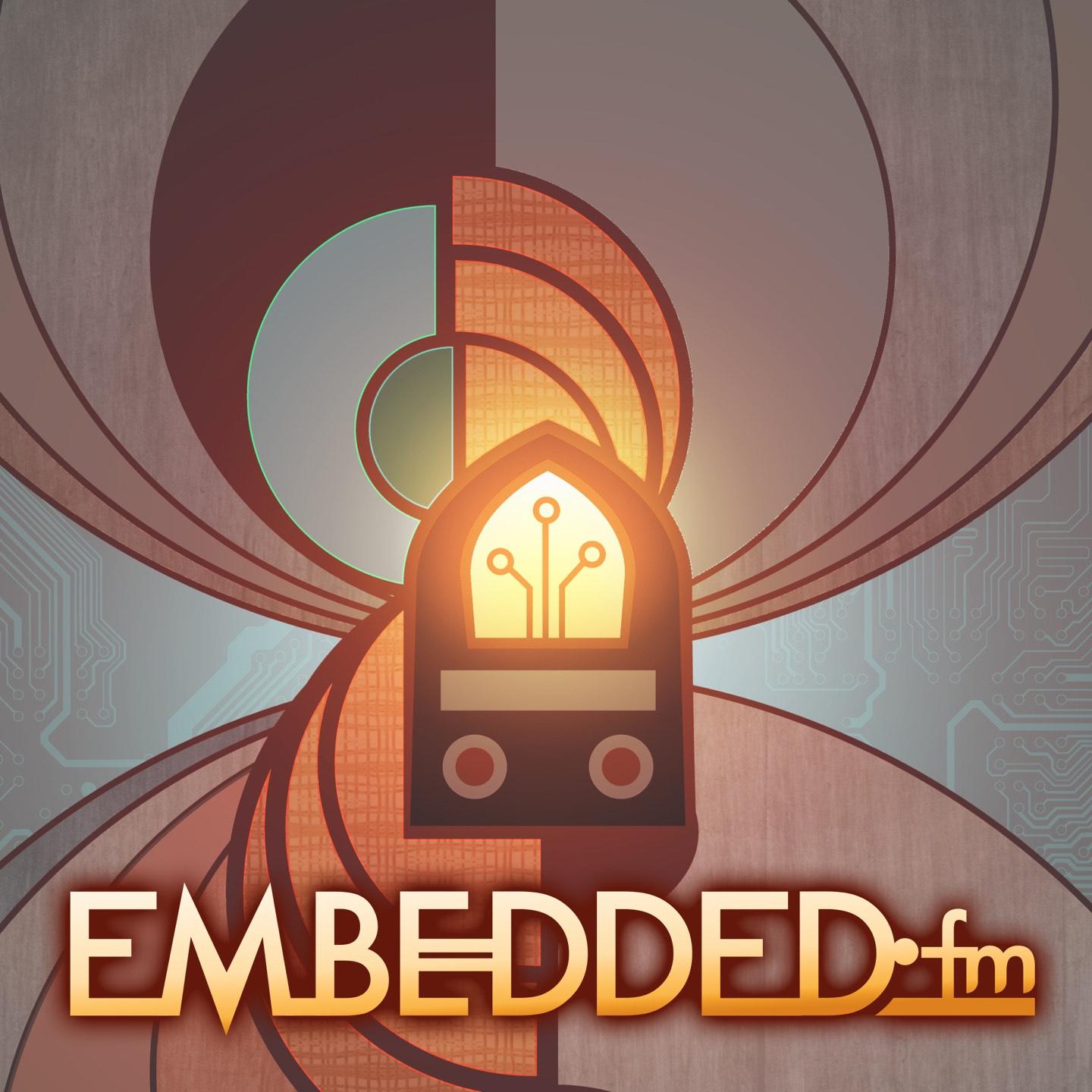
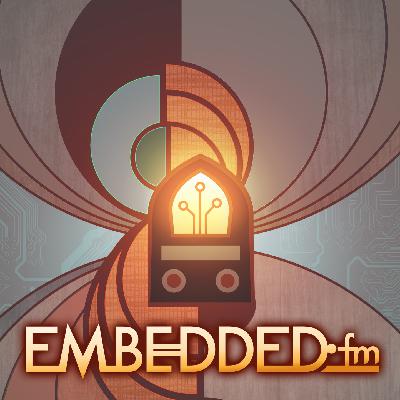




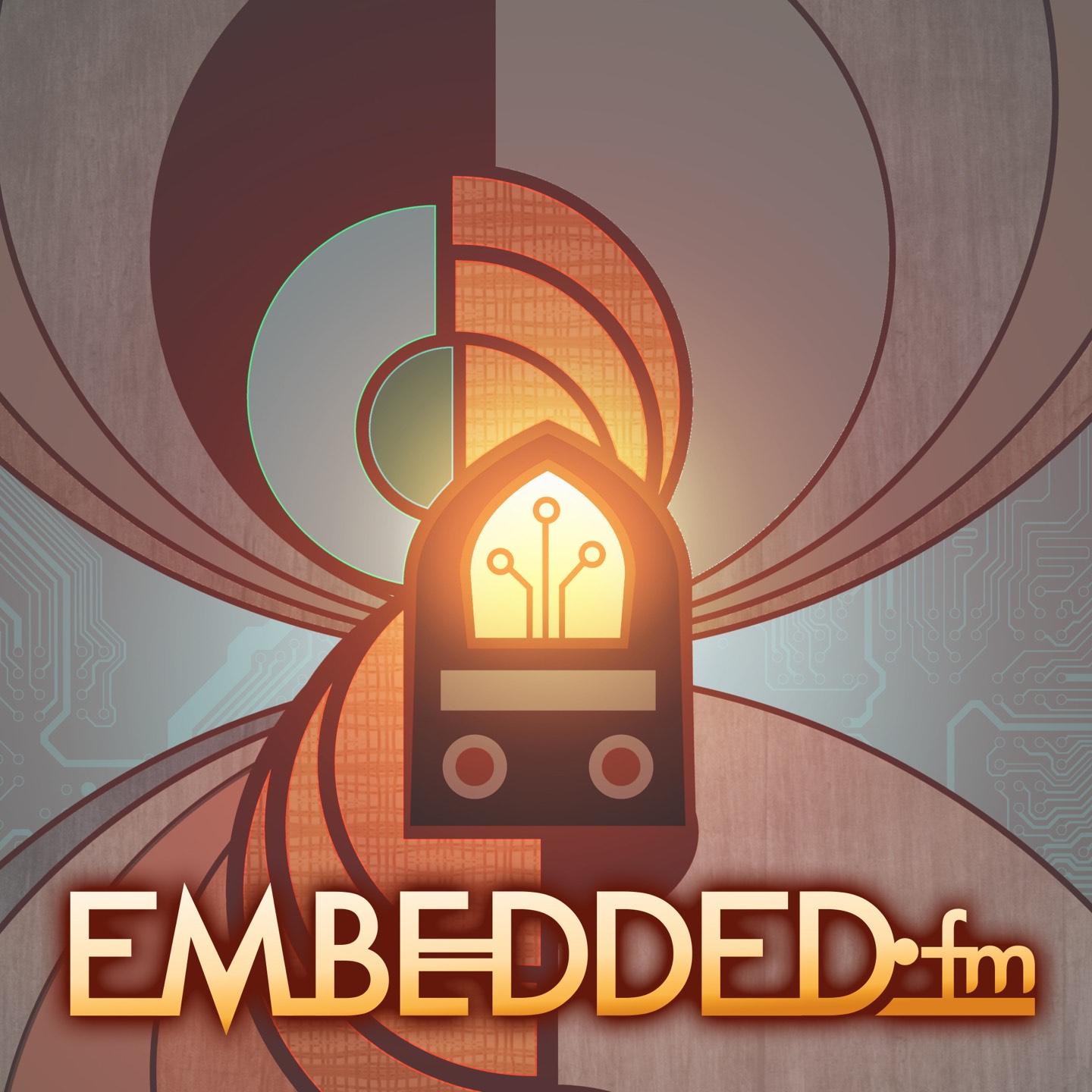
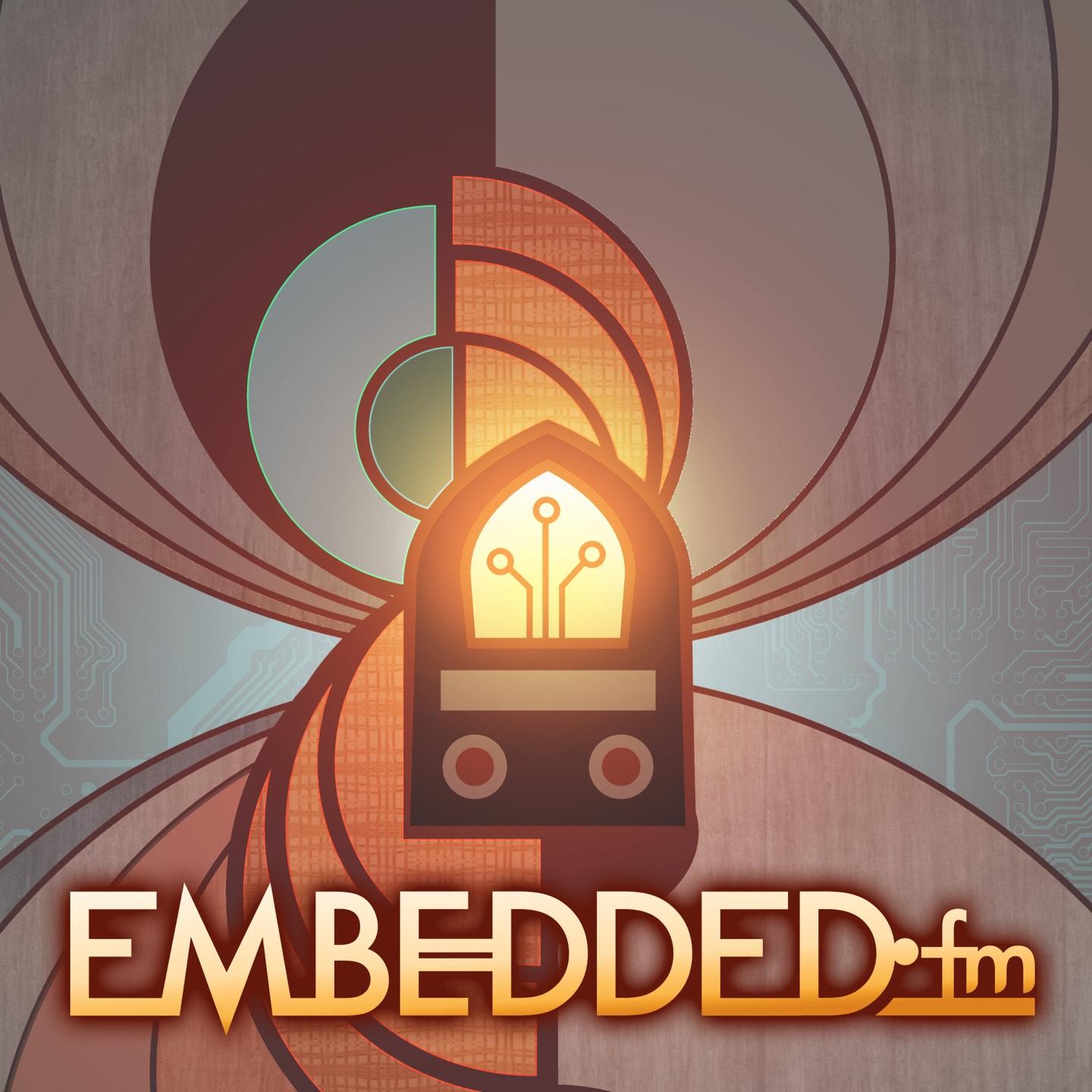



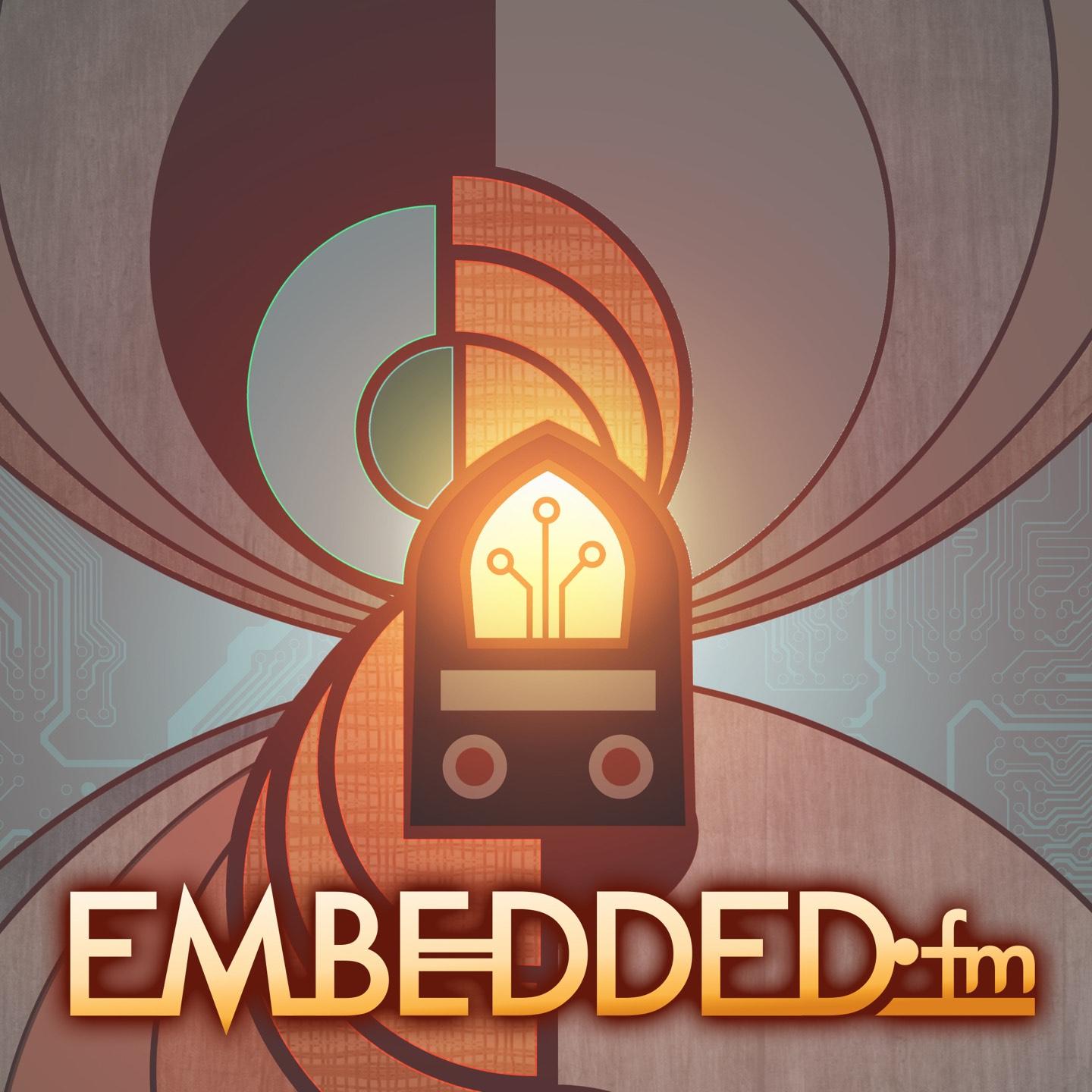










it was fascinating...
I love the show, even if I'm not ingaged in embedded design. It covers the fundamental view of creativity in engineering and I found that, no matter what you engineer, on some level it just merges. Apart from that, hearing passionate people talk about their field gives you a warm, fussy, feeling inside. Even if you don't have an idea what they are talking about.
I enjoyed the overall view of her career. for one, it gives a view of engineering "in the field* instead of at a desk
Love your podcast
Excellent podcast, especially when Alvaro is on!
you two are such goofs, I love it. please don't stop the podcast
reignited my passion for C++, on my journey to becoming a software engineer.